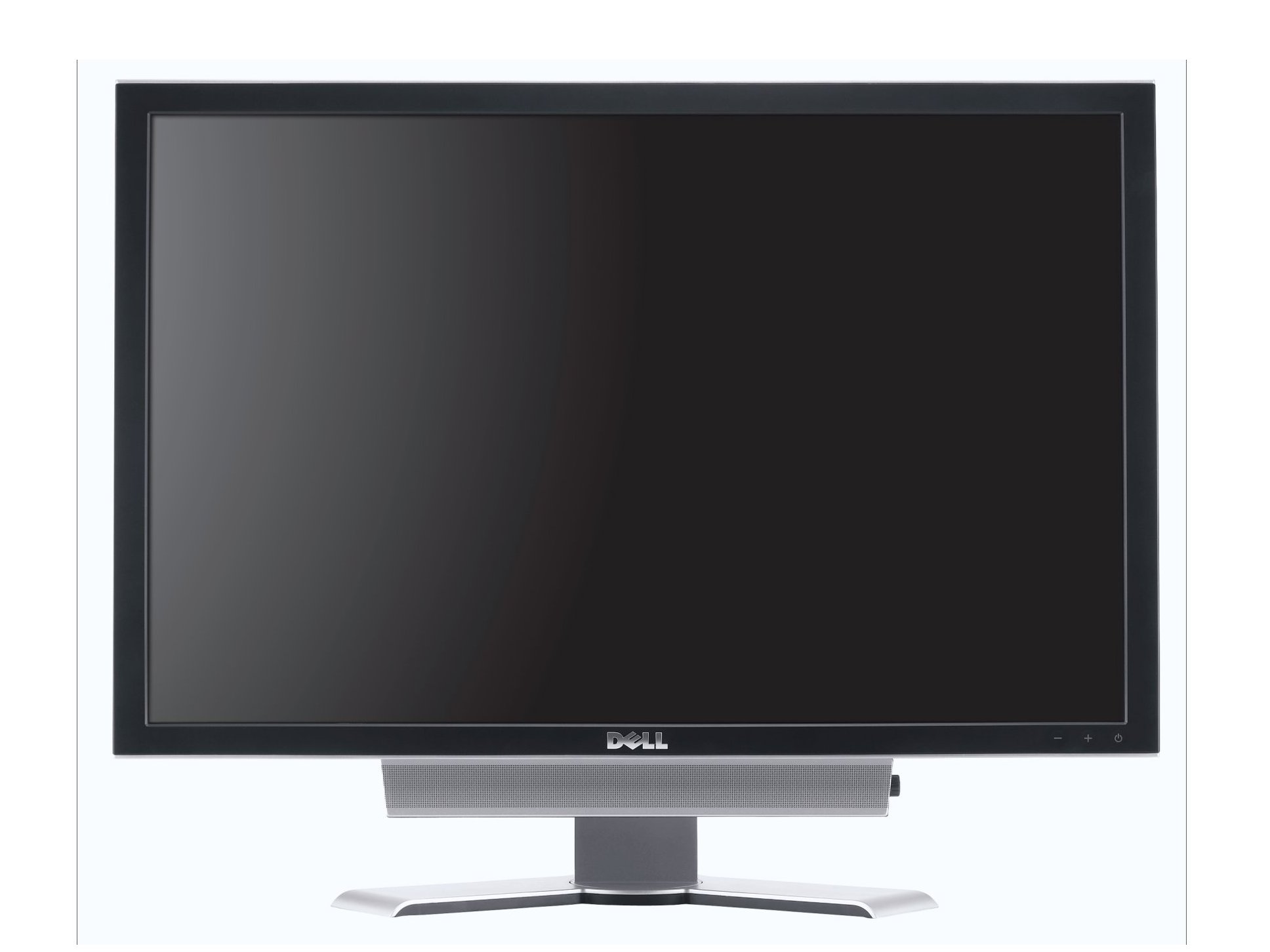First look: Dell 3007WFP-HC
Dell takes on HP to be king of the 30-inch display

It's just over a year since Dell unsheathed the 30-inch LCD monstrosity that is the 3007WFP . At around £1,400, it was the first mega monitor that mere mortals could just about afford. But now other manufacturers including HP are getting in on the (relatively) mainstream 30-inch game, Dell has recently released a revised model of its own and prices have just fallen to three figures. Time, therefore, to revisit the market for 30-inch monitors.
Back in early 2006, the sheer giddy scale of the 3007WFP and its eye-watering 2,560 x 1,600 native resolution was enough to generate showbiz headlines, despite some serious image quality shortcomings.
Poor contrast, iffy viewing angles and patchy backlighting were just a few of the crimes against visual fidelity the big, bad Dell was allowed to get away with. But for the new 3007WFP-HC and its HP-produced competitor, the LP3065 , we won't be making any such allowances. These are second generation 30-inch panels and we expect near-enough perfection.
Fortunately, that's what both monitors come extremely close to delivering. In fact, there's frankly nothing to choose between the two in terms of pure visuals. At this rarefied end of the market, only a handful of companies produce the huge LCD screens that go into these monitors. So, it's no surprise to find the very same LG S-IPS panel powering both the Dell and HP.
Notably, it addresses every one of the original 3007WFP's weakness. Improved contrast (up to 1,000:1 for both screens) and light occlusion, for instance, translate into significantly deeper blacks than the rather wishy-washy first-gen Dell, though the very best monitors equipped with PVA panels remain even inkier.
Killer colours
But where the LP3065 and 3007WFP-HC really score is colour rendering. Courtesy of the latest Wide Color Gamut CCFL backlight technology, they share an identical 92 per cent NTSC colour rating. In practice, that means more vibrant, saturated and accurate colours.
If you're a graphics professional looking for acres of elbow room, these screens are surely your weapons of choice. They're also absolutely gorgeous for viewing high definition video and simply killer for 3D gaming.
Sign up for breaking news, reviews, opinion, top tech deals, and more.
Just remember you'll need major 3D horsepower to run the latest games at that borderline insane 2,560 x 1,600 native. In single-card terms, nothing less than NVIDIA's GeForce 8800 GTX will do. Gamers need to factor in another £350 or so to the purchase price of either monitor.
All of which means the choice between this monolithic 30-inch pairing comes down to features and pricing. Neither monitor is terribly flexible thanks to a lack of internal image scaling hardware or the ability to handle analogue signals. But where the Dell has just a single DVI socket, HP has at least seen fit to a trio of digital ports. HDCP support for playback of protected content is present on both.
However, for aesthetics and value, the 3007WFP-HC has the LP3065 thoroughly licked. Where the HP's chassis is a deeply anonymous black plastic affair in the usual corporate idiom, the Dell is a masterpiece of industrial design. It's probably the sexiest screen on sale today.
Unless that additional pair of DVI ports swings it for you, therefore, the outcome is a bit of a no brainer. With a current price of £950, the 3007WFP is nearly £300 cheaper, it's a better looking monitor and it offers the same awesome visual experience.
But just before you pull the trigger, consider this: BenQ and Samsung are prepping their own 30 inchers. Intriguingly, the latter will sport Samsung's own S-PVA panel and could be the best bet yet for big screen multimedia malarkey on the PC.
Tech.co.uk will be back with the final verdict on the 30-inch market once the BenQ and Samsung monitors have appeared in Blighty.
Specification - Dell 3007WFP-HC
Type Active Matrix S-IPS TFT
Connections Dual-link DVI (with HDCP)
S creen diagonal 30in
Native resolution 2,560 x 1,600
Contrast ratio1000:1
Brightness300 cd/m2
Viewing angles178 degrees (H&V)
Response time8ms (g-to-g)
Pixel pitch0.25mm
Chassis adjustments Swivel, tilt, height Dimensions (mm)690mm x 200mm x 470mm (W x D x H)
Weight11.38kg
Tech.co.uk was the former name of TechRadar.com. Its staff were at the forefront of the digital publishing revolution, and spearheaded the move to bring consumer technology journalism to its natural home – online. Many of the current TechRadar staff started life a Tech.co.uk staff writer, covering everything from the emerging smartphone market to the evolving market of personal computers. Think of it as the building blocks of the TechRadar you love today.